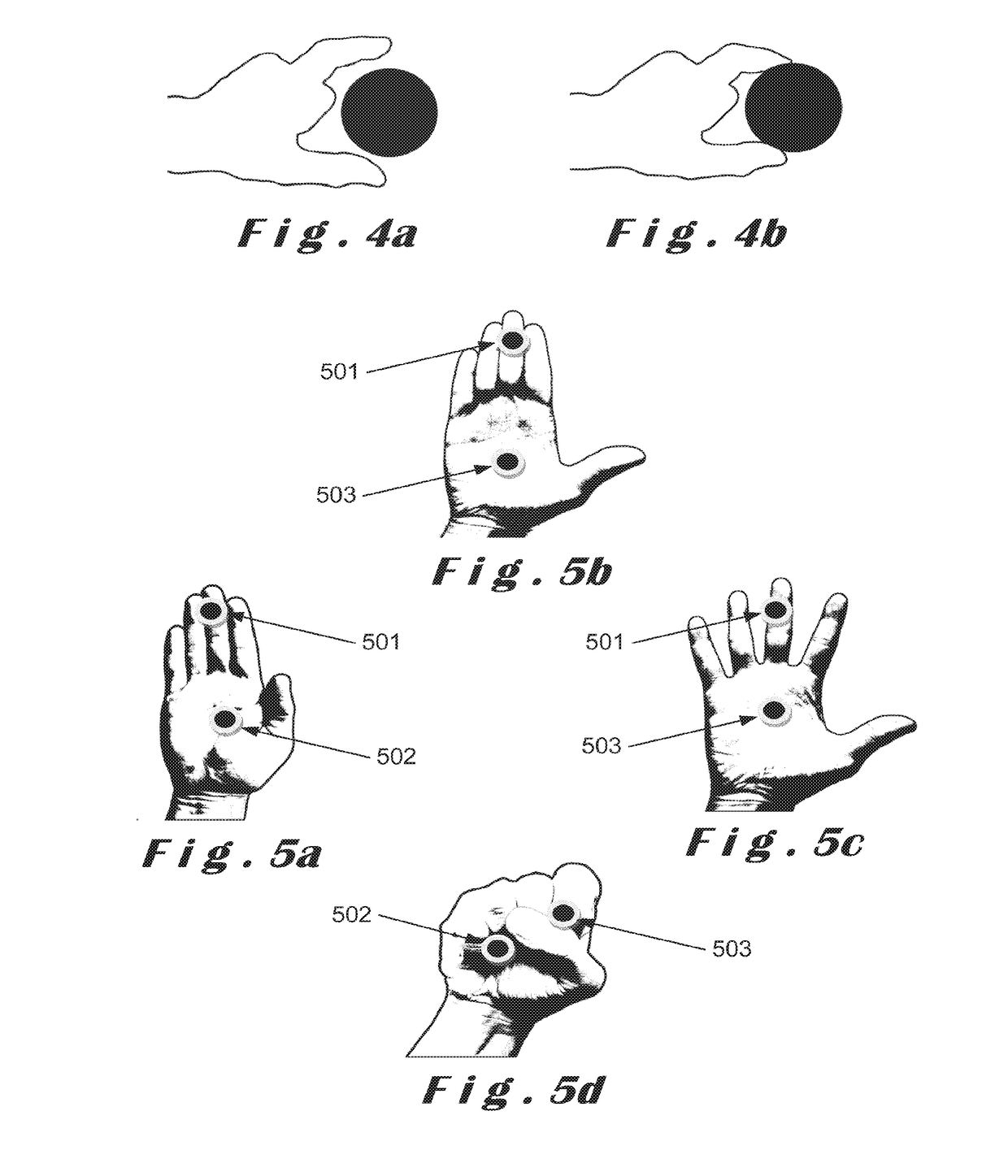Method and system for human-to-computer gesture based simultaneous interactions using singular points of interest on a hand
a human-to-computer gesture and simultaneous interaction technology, applied in the field of human-to-computer natural interactions, can solve the problems of inability to accurately analyse any other extremity present in the 3d scene, the loss of finger tracking, and the limitations of gesture-based methods
- Summary
- Abstract
- Description
- Claims
- Application Information
AI Technical Summary
Benefits of technology
Problems solved by technology
Method used
Image
Examples
first embodiment
[0106]In a first embodiment describing “pointing” interactions, the method may comprise using a singular POI, namely the palm centre as determined above as the reference POI to determine the position of the pointer representation in the virtual world space. Changes in the position of the palm, with respect to time, triggers changes in the position of its representation in the virtual space over the time. The transformation of the real world positions to the virtual world positions may be linear computations using a 1-to-1 absolute ratio or linear computations using a 1-to-x relative ratio, where the x factor can be predetermined by the user, a non-linear computation using, for example, a polynomial transformation ratio predefined by the user, or may have a ratio dependent on the distance of the hand to the imaging device.
[0107]In another embodiment, a similar method may comprise using the hand tip reference position to determine the position of the pointer representation in the virt...
second embodiment
[0115]In a second embodiment, “grabbing” interactions, the method comprises using the palm centre determined as described above as the hand parameter defining the reference position to determine the position of a single pointer representation in the virtual world space. The method comprises further determining two POI on the hand, for example, the hand tip and the tip of the thumb. The interaction then comprises pointing towards a virtual object enabling the “grabbing” feature. The “grabbing” of the virtual object will occur when the two POI move close to one another to a distance below a predefined threshold. At that time, the representation of the virtual object will be associated to the position of the pointer representation and will then move accordingly. The virtual object will be released (no longer “grabbed”) at the time at which the distance between the two points of interest reaches a second predetermined threshold.
[0116]In another embodiment, the method comprises determini...
third embodiment
[0118]In a third embodiment, manipulation interactions, the method comprises using at least one pointer, and preferably two, selected from the hand parameters determined as described above, for example, the pointers may correspond to at least one of the hand tips. The position of the pointers in relation to the virtual object represented on screen may be used for triggering, controlling and stopping the manipulation of at least one parameter of the virtual object. For example, triggering the beginning and the end of the manipulation can be linked to the distance of two pointers to the border of the virtual object; the manipulation may consist in determining the position of the virtual object according to the average positions of the pointers; and the orientation of the virtual object may be determined according to the direction from one pointer to another pointer determined with respect to the horizontal and vertical axis of the display screen.
[0119]In another embodiment, the method...
PUM
 Login to View More
Login to View More Abstract
Description
Claims
Application Information
 Login to View More
Login to View More - R&D
- Intellectual Property
- Life Sciences
- Materials
- Tech Scout
- Unparalleled Data Quality
- Higher Quality Content
- 60% Fewer Hallucinations
Browse by: Latest US Patents, China's latest patents, Technical Efficacy Thesaurus, Application Domain, Technology Topic, Popular Technical Reports.
© 2025 PatSnap. All rights reserved.Legal|Privacy policy|Modern Slavery Act Transparency Statement|Sitemap|About US| Contact US: help@patsnap.com



